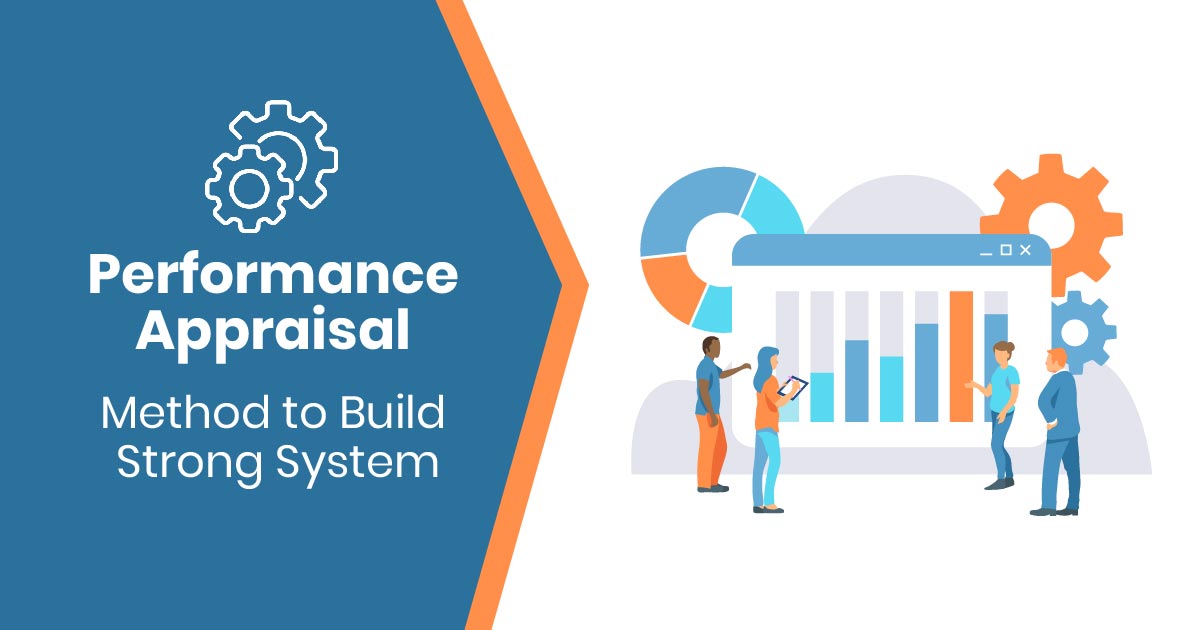Performance Appraisal Method to Build Strong System

Employee retention rate depends on multiple factors like company culture, benefits & facilities provided, perks involved, etc. The company’s performance appraisal method is another major reason that influences employee retention decisions in the company for a longer period. The effective performance evaluation method impacts the overall process.
Transparent and effective coordination throughout the appraisal process impacts employee retention decisions. Additionally, the type of performance appraisal the company follows is crucial to ensure employees get deserving increments and hikes. There are multiple types of appraisal methods that companies follow depending on their structure and workflow.
4 Types of Performance Evaluation & Appraisal Methods
A company’s success is often measured by employee satisfaction and contributions made to the company. Many organizations use combinations of appraisal methods to get better outcomes according to their objectives. Here are some of the major performance appraisal methods discussed-
1) 360 Feedback
The widely used appraisal method is 360 feedback where peers are provided feedback form to fill in details for specific employees. This feedback form contains multiple questions related to employee performance, tasks completed, engagement, and behavior towards them. Moreover, managers, colleagues, direct superiors, and team leaders are also involved in this process. It provides holistic employee feedback to HR personnel and managers, and accordingly, appraisals are decided.
The 360 Feedback performance evaluation method requires no employee appraisal management software to execute. It solely depends on the company’s management, transparent feedback form fillings, and coordination with peers. The actual feedback is then received, it is one of the most bias-free methods where complete coordination makes better appraisal decisions.
2) Management By Objective
Another widely used appraisal evaluation method is Management by Objective (MBO). As the name suggests, goals are pre-decided, and according to the progress of achieving those goals, the employee appraisal is decided. This method involves managerial involvement where goals are pre-decided for employees, and regularly, employee performance is measured in terms of achieving those goals.
MBO is not a specific appraisal method that works on appraisal tools or time management software but is a structure & framework for setting goals and performance. The objectives are based on the SMART framework, Specific, Measurable, Achievable, Relevant, and Time-bound. Additionally, once objectives are formed, actions for employees are defined to make necessary steps to achieve those goals.
3) Human Resource Cost Accounting Evaluation
As the name suggests, this method of appraisal evaluates financial contributions made by employees in specific tenure, majorly annually. Additionally, it counts the cost spent on employees, including basic pay, benefits, & perks annually, and accordingly measures their contribution made. It is commonly used for specific work profiles, for instance, for business development executives to drive revenue, and for C-level executives to measure value they’ve added.
It is often challenging to measure value added through this appraisal method, as quantitative value added is not measured for a few roles. Some work profiles contribute to cost reduction, brand awareness, improved word-of-mouth, or social presence. Hence, it depends on work designation, company size, objectives, etc.
4) Behaviorally Anchored Rating Scales (BARS)
The last performance appraisal method on the list BARS uses behavioral approaches to measure performances for specific work profiles. It is comparatively more efficient than traditional appraisal methods. The method is more specific about employee performance feedback with its specific behaviors from different job roles, where every scenario of good, better, and best performance is stated, and accordingly, feedback is provided to employees.
The method reduces personal biases that majorly happen in traditional appraisal methods. Additionally, the clear use of specific anchors ensures effective object evaluation between employees and managers, along with effective communication regarding business goals, employee performance, expectations & targets.
How to Build A Performance Appraisal Method in an Organization?
Let’s understand how organizations build appraisal methods to evaluate employee performance-
i) Identify Your Goals
Having a clear vision of your requirements and goals helps in forming an appraisal method that requires less of any HRMS tool or time management software. Therefore, first, get answers to the following questions:
- Do you need it to improve employee performance?
- Do you need leaders or require new faces to handle business operations?
- Does your business need a fair employee compensation basis and structure?
- Would you like to take action regarding your team’s performance towards achieving goals?
- Do you want to promote employee engagement with your organization?
Finding answers to these related questions helps in forming an appraisal method’s structure.
ii) Develop a Consistent Appraisal Process
Once you identify goals to achieve with or without employee appraisal management software, it is important to structure the overall appraisal process. Therefore, ensure to:
- Form performance objectives for employees/ teams.
- Provide regular feedback and updates for specific tasks & projects.
- Conduct performance reviews.
- Work together on enhancing employee performance & goal achievement.
The above-mentioned structure is effective in evaluating employee performance where effective coordination and transparent workflow ensures the team gets deserving appraisals. There are many benefits for employees and employers’ structured employee appraisal method, a few of them are-
For Employees-
- Clarity on work roles & responsibilities
- Development opportunities
- Recognition for achievements and contributions
For Employers-
- Improved employee engagement and motivation
- Enhanced employee performance and productivity
- Stronger alignment with organizational goals
Wrap Up
A well-structured employee performance appraisal method is beneficial for organizations, leading to productivity, employee engagement, goals achievements, etc. Entrepreneurs of early-age startups form multiple strategies to implement an effective appraisal method. Notably, it is often time-consuming and challenging to implement employee appraisal method(s). Therefore, it is advisable to analyze requirements, analyze, identify which method or methods work well for your business. In the longer period, it gives compounding benefits to companies in terms of good employee retention rates, which has become a challenge to maintain today.
